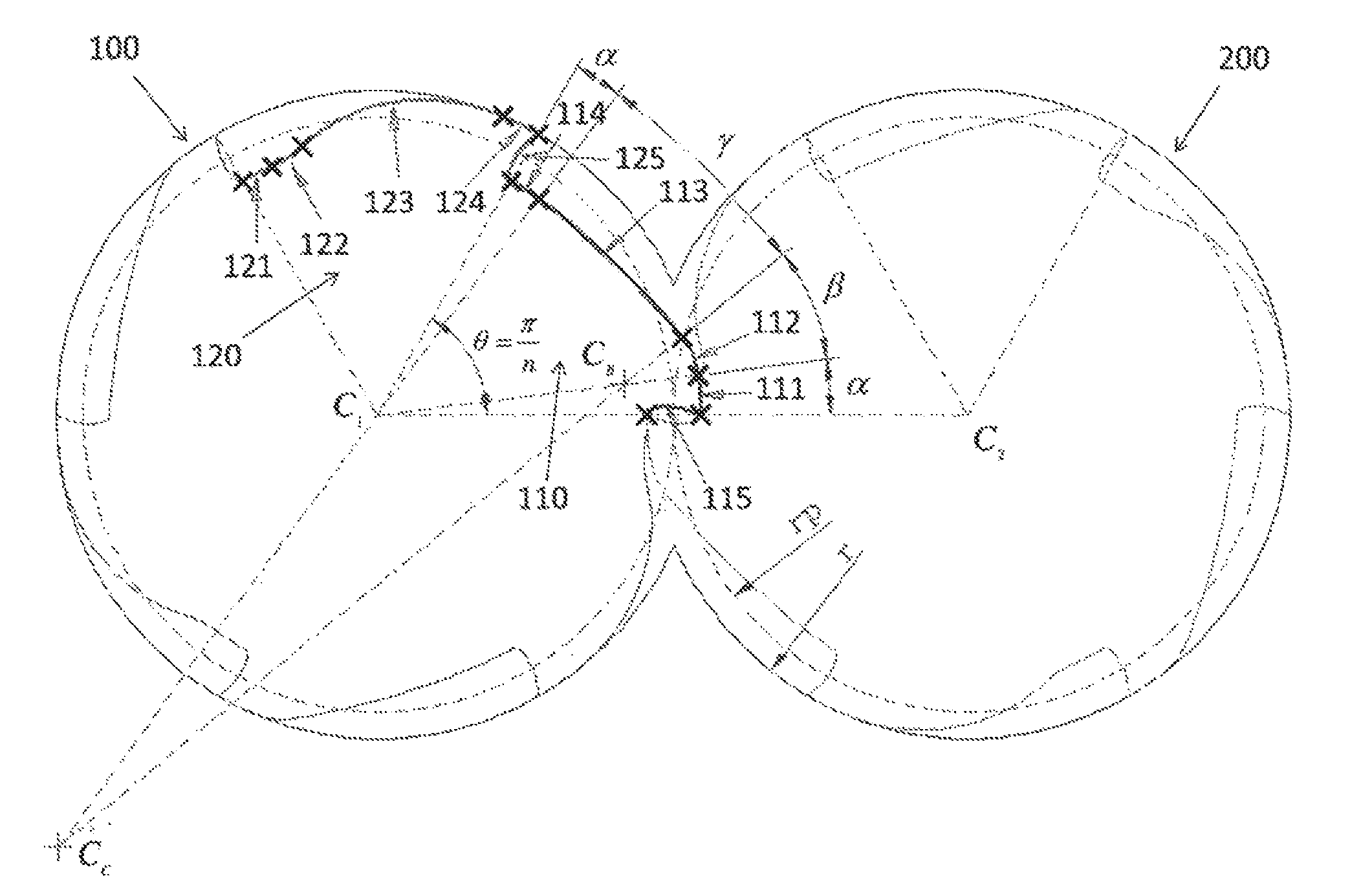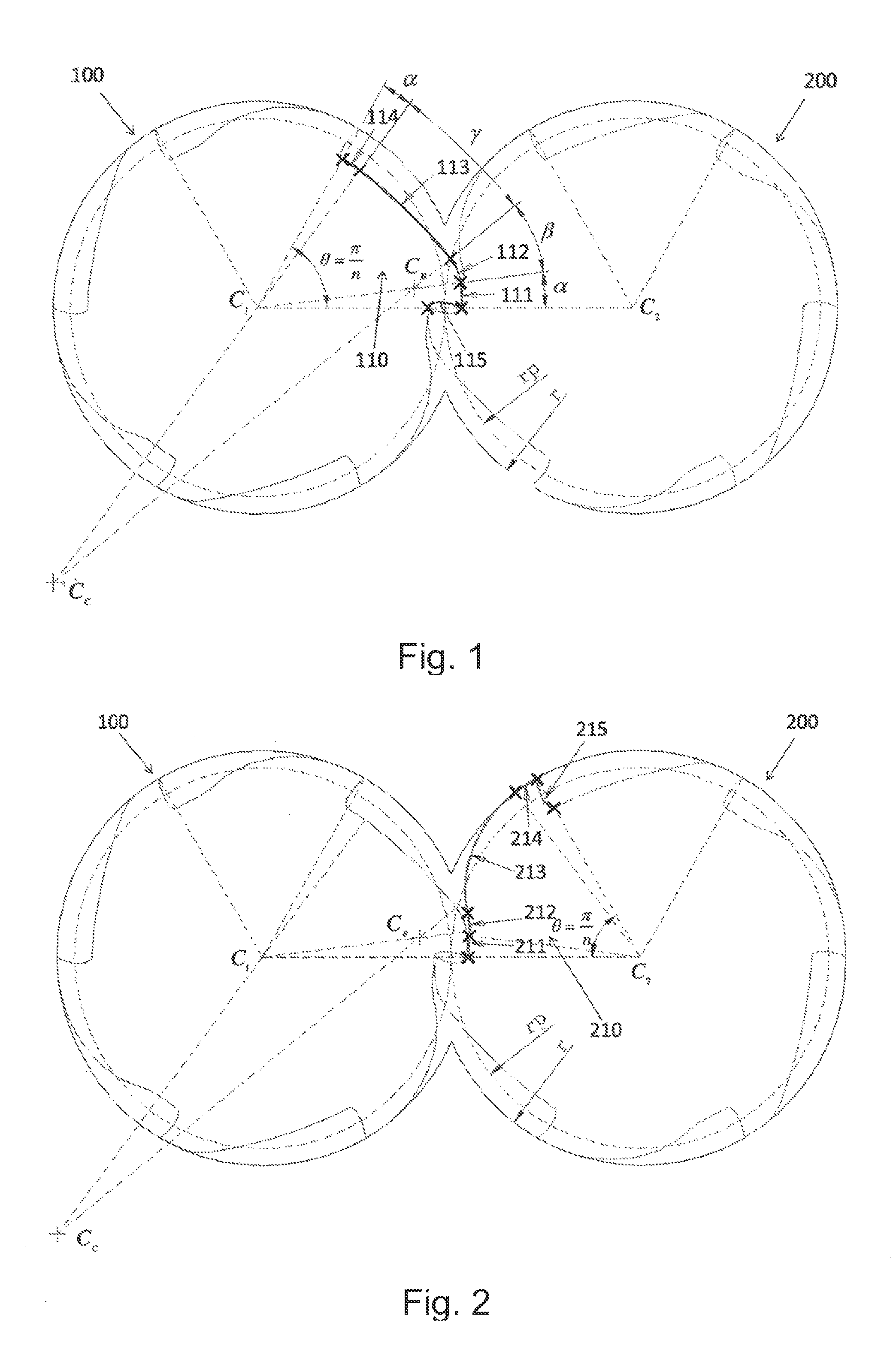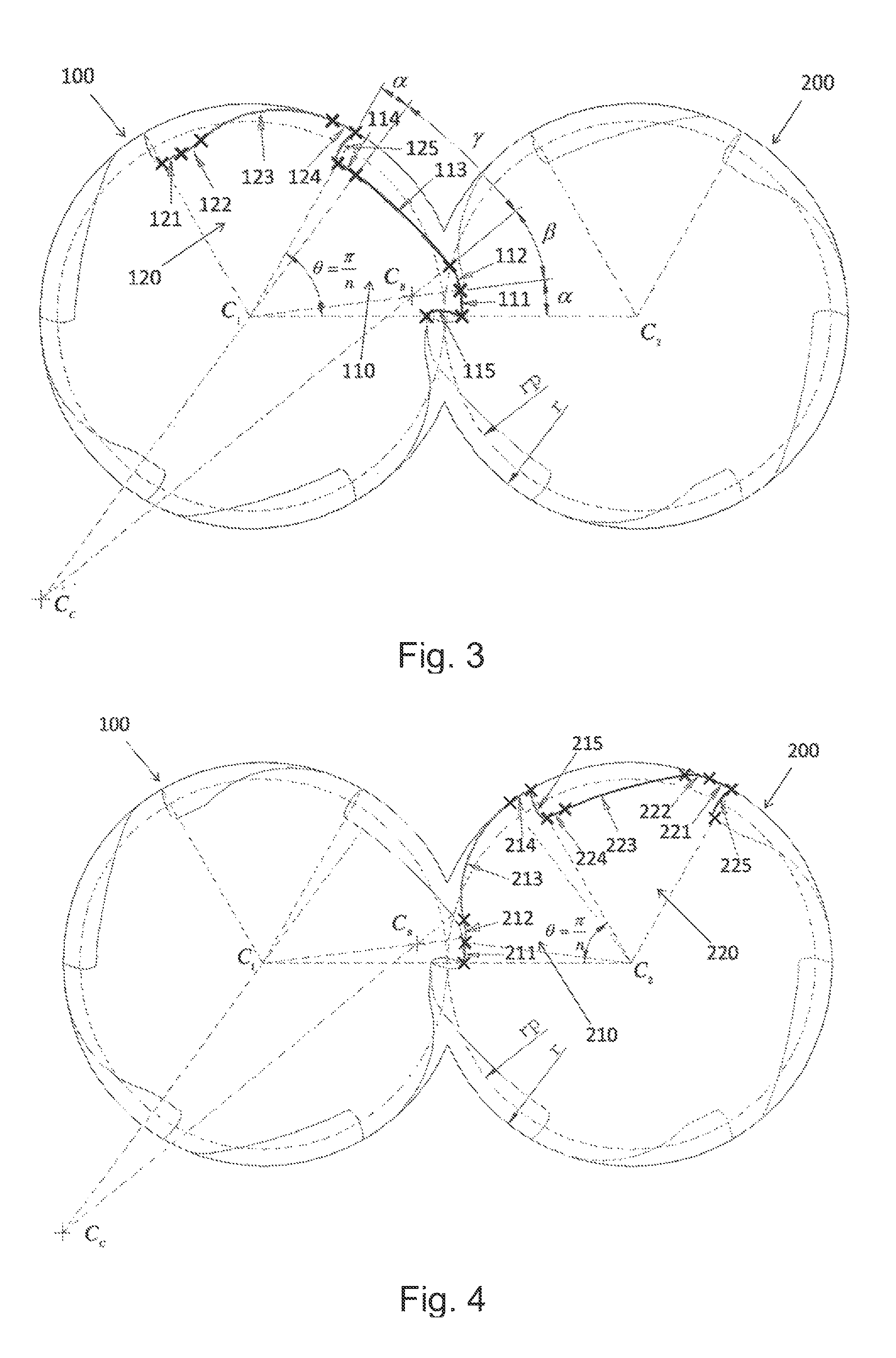Device of a pair of claw-type rotors having same profiles
a technology of claw-type rotors and rotors, which is applied in the direction of gearing, hydraulic equipment, liquid fuel engines, etc., can solve the problems of inability to fully define the rotor and the conjugate rotor, noise and vibration, and noise and vibration of the conventional claw-type rotor, so as to prolong the life of the device, avoid noise and vibration, and mitigate mechanical fatigue
- Summary
- Abstract
- Description
- Claims
- Application Information
AI Technical Summary
Benefits of technology
Problems solved by technology
Method used
Image
Examples
first embodiment
[0015]Referring to FIGS. 1 to 4 showing a device of a pair of claw-type rotors of the present invention, the pair of claw-type rotors have same profiles and comprise a defined rotor 100 and a conjugate rotor 200 both intermeshing with and conjugating to each other. Referring to FIG. 1, in this embodiment the defined rotor 100 and the conjugate rotor 200 each has six claws, and profiles of the claws of the defined and conjugate rotors 100 and 200 are same as each other. A first claw of the defined rotor 100 has a cross-section profile including a sharp portion and a root portion that are defined by predetermined non-linear equations. A cross-section profile of a first claw 210 of the conjugate rotor 200 is defined by the conjugate theory (as shown in FIG. 2). The first claw 210 of the conjugate rotor 200 is imaged to the defined rotor 100 to form a second claw of the defined rotor 100, while the cross-section profile of the first claw 110 of the defined rotor 100 is imaged to the con...
second embodiment
[0024]In the second embodiment the second and third arcs 112 and 113 jointly form an angle of 360° divided by the number of claws with respect to a center C1 of the defined rotor 100. The epicycloid 115 is defined by a start point and an end point, the start point spaced away from the center C1 of the defined rotor 100 at a distance which is the rotor radius r subtracted from two times the pitch circle radius rp, while the end point is spaced apart from the center C1 of the defined rotor 100 with the rotor radius r, and the start point and end point of the epicycloid 115 are in alignment with the center C1. The second arc 112 starts from the end point of the epicycloid 115 and has a center CB located at a point between and in alignment with both the centers C1 and C2 of the defined rotor 100 and conjugate rotor 200. The third arc 113 ends at a distance of the rotor radius r subtracted from two times the pitch circle radius rp and is located at a point where an angle of the defined r...
PUM
 Login to View More
Login to View More Abstract
Description
Claims
Application Information
 Login to View More
Login to View More - R&D
- Intellectual Property
- Life Sciences
- Materials
- Tech Scout
- Unparalleled Data Quality
- Higher Quality Content
- 60% Fewer Hallucinations
Browse by: Latest US Patents, China's latest patents, Technical Efficacy Thesaurus, Application Domain, Technology Topic, Popular Technical Reports.
© 2025 PatSnap. All rights reserved.Legal|Privacy policy|Modern Slavery Act Transparency Statement|Sitemap|About US| Contact US: help@patsnap.com



